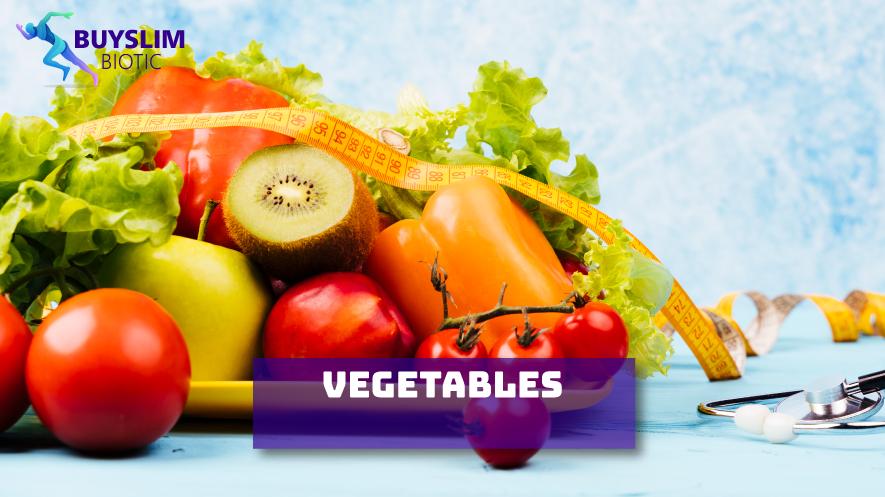Attain optimal health with our Balanced Diet guide. Packed with nutritionally-rich foods and meal planning tips, it’s your roadmap to a healthier lifestyle. Embrace a variety of fruits, vegetables, whole grains, and lean proteins for a vibrant, nourished life
Discover the key to a healthier and more energetic life with a balanced diet. Explore the benefits of incorporating essential nutrients, and vitamins.
A balanced diet is essential for optimum health. It can help prevent disease and promote good mental and physical health.
A healthy diet should consist of vegetables and fruits, whole grains, lean protein, moderate amounts of unsaturated fats, and water or other non-alcoholic beverages. It should also limit empty calories from overly processed and sugary foods and snacks.
Carbohydrates
The body uses food to get the macronutrients (protein, carbohydrates and fats) and micronutrients (vitamins, minerals and antioxidants) it needs to function optimally. The balance of these nutrients, not the food groups they come from, is what determines health. Eating a balanced diet supports your body and mind to prevent disease, promote growth and development and help fight off infection and fatigue.
The goal of creating a balanced meal is to provide your body with the protein, carbohydrates, and healthy fats it requires for energy in the form of calories. Carbohydrates come from fruits, starchy vegetables like potatoes and squash, as well as from beans, whole grains, quinoa, and pasta. These foods give you energy by converting to glucose in the bloodstream. Protein provides the building blocks for your muscles, tissues, and immune system and helps keep you feeling full. Healthy fats are energy-rich and can be found in sources such as avocados, nuts, seeds, and olive oil.
When building meals, it’s important to prioritize whole foods. Try to make most of your meals from a variety of nutrient-rich, plant-based options, such as fruits, vegetables, legumes, soy products, whole grains, and nuts and seeds. You can still have meat and dairy on your plate, but limit it to lean cuts of red meat and poultry, fish and shellfish, eggs, and a small amount of low-fat yogurt.
In addition to prioritizing whole foods, make sure you’re eating enough to satisfy hunger and eat to your fullness level. Aim for three meals and snacks a day and remember, portion sizes matter! Aim for a smaller serving size at each meal and snack to keep you from overeating.

Proteins
A balanced diet is essential for maintaining health and wellness. This means consuming a wide variety of foods from the five major food groups: proteins, carbohydrates, fats, fruits, and vegetables. Each food group provides key nutrients to the body. A healthy diet is also one that avoids processed and refined foods.
Proteins are a vital nutrient that the body uses for energy and repair. They help build and strengthen muscles, support the immune system, and metabolize other nutrients. Proteins can be found in a variety of food sources, including fish (especially those low in methylmercury), poultry, skinless and lean meats, eggs, dairy products (such as yogurt), tofu, beans, lentils, and nuts.
According to nutrition experts, protein needs vary across individuals and should be included in each meal and snack. Most people should aim to consume 0.8 grams of protein per kilogram of body weight. This equates to about 46 grams of protein for a 200-pound person or 70 grams of protein for a 150-pound person.
While it may seem like a lot of work, creating a balanced diet isn’t difficult. Start by prioritizing whole foods, making sure you eat a variety of colors, and adding herbs and spices to your meals to add flavor. In addition, try to listen to your hunger and fullness cues as well as follow a natural appetite guide.
In general, a balanced diet should be free of highly processed foods and sugary beverages. It should also be comprised of mostly lean or low-fat proteins, fruits and vegetables, whole grains, and beans and legumes. If you have any questions about a balanced diet, consult with a registered dietitian or doctor.
Fats
Fats, which supply energy, are important for the body’s cell structure, hormone production, and vitamin absorption. They help maintain healthy cholesterol levels, regulate blood pressure, and keep the body warm. In the past, “bad” fats like artificial trans fats and saturated fats got a bad rap, but studies have shown that “good” fats such as polyunsaturated and monounsaturated fats (from avocadoes, nuts, seeds, olive oil, and fish) actually improve moods and reduce inflammation in the body.
Balanced diets should include a variety of foods from all major food groups. Generally, a balanced diet is one that is low in added sugars and salt and contains plenty of fruits and vegetables, lean meats, dairy, whole grains, and low-fat or nonfat sources of protein. It also provides adequate hydration and contains essential vitamins and minerals to support growth, development, immune function, and overall health.
A person’s dietary needs vary based on age, gender, activity level, and other factors. Creating a healthy meal plan requires taking these variables into consideration along with personal tastes, cooking ability, budgets, and medical conditions.
When it comes to creating a balanced diet, it’s best to prioritize whole foods as much as possible. It’s also important to eat a variety of foods from each food group and to listen to your body’s natural hunger and fullness cues. If you want to create a simple formula that can help you ensure that all three macronutrients (carbohydrates, proteins, and fats) are included in each meal, consider using the 3-for-3 rule. For example, aim to eat foods that contain all three macronutrients at every meal and snack you have. You can make your meals and snacks more visually appealing and fun to eat by adding color and flavor with herbs and spices.
Vegetables
Vegetables are a very important part of any diet. They contain a variety of nutrients that are not easily found in other foods. They are also a source of fibre which helps to keep the digestive tract healthy. It is recommended that a person consumes 3-6 cups of vegetables per day.
Vegetable nutrients include vitamins, minerals, and health-building phytochemicals, as well as low-calorie fiber. They are a great source of calcium, iron, vitamin A, and folic acid.
They are low in calories and can help a person manage their weight and reduce the risk of chronic diseases such as high blood pressure, heart disease, and diabetes. The soluble fiber in many vegetables also helps to lower cholesterol and reduce the risk of developing digestive problems such as constipation, diverticulitis, and hemorrhoids.
Getting enough vegetables can be a challenge, especially for those who are not used to eating them regularly. The best way to meet your vegetable requirements is to eat a variety of different colors of vegetables daily. This provides the greatest range of nutritional benefits.
Aside from being a nutritious addition to meals, vegetables can also be a tasty snack. Try adding some carrots, snap peas, celery or cucumber slices to hummus, guacamole, and dips. You can also add vegetables to soups and stews.
A balanced diet should contain foods from all food groups, with an emphasis on vegetables, fruits, and whole grains. However, individual nutrition needs may vary so you should consult a registered dietitian to find out what is the right balance of foods for your body. A registered dietitian can provide you with personalized meal plans to suit your goals, preferences, and lifestyle.

Fruits
Fruits are a nutritious source of vitamins, minerals, and fiber. They also add flavor and texture to meals. Most fruits are low in calories and fat. Fruits are a great dessert option and can satisfy a sweet tooth without the added sugar of candies and other processed desserts. They are a good source of antioxidants, which can help protect against cancer, heart disease and other diseases.
Eating the recommended number of servings of fruit and vegetables a day will provide many health benefits. The 5 A Day campaign recommends eating 4 1/2 cups of a variety of vegetables and fruit a day. This can be achieved with a mix of fresh, frozen, canned, and dried vegetables and fruit. When purchasing packaged fruit and vegetables, choose varieties with the lowest amount of sodium and added sugars.
A diet rich in fruits and vegetables will supply you with a range of nutrients including fiber, vitamin C, potassium, folate, and antioxidants. Choose a colorful variety and look for local fruits and vegetables when possible, as they will be fresher and have more nutritional value.
Try adding fruit to porridge, yogurt, salads, and sandwiches. It can also be stewed, poached, or baked into a healthy dessert like apple crumble or banana bread. It is a good idea to have some fresh or frozen fruit available as a quick snack when out and about. You can even make your own healthy trail mix using whole-grain nuts, seeds, and raisins or berries.




